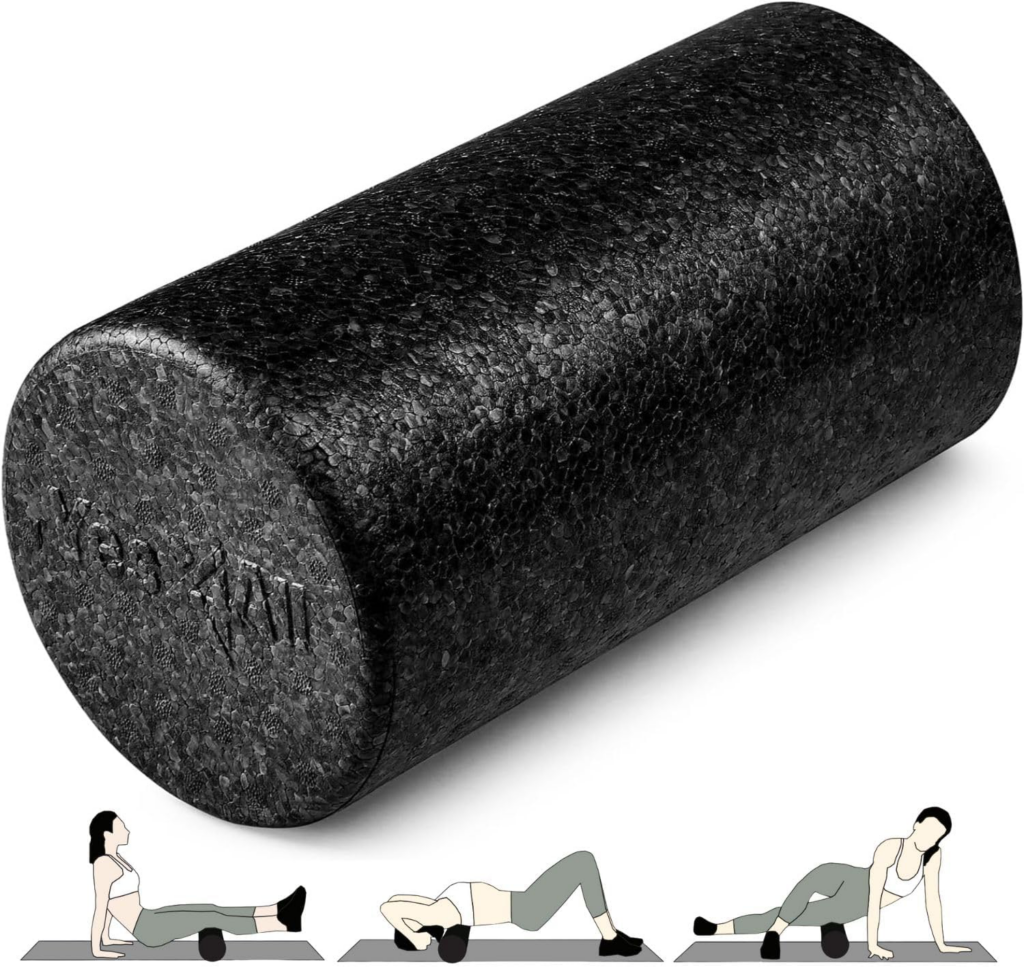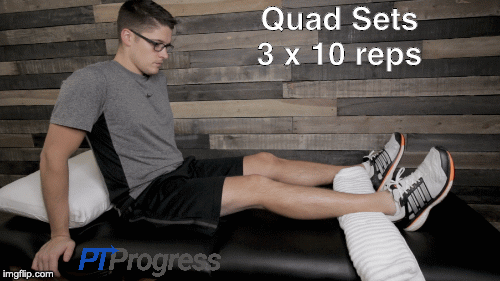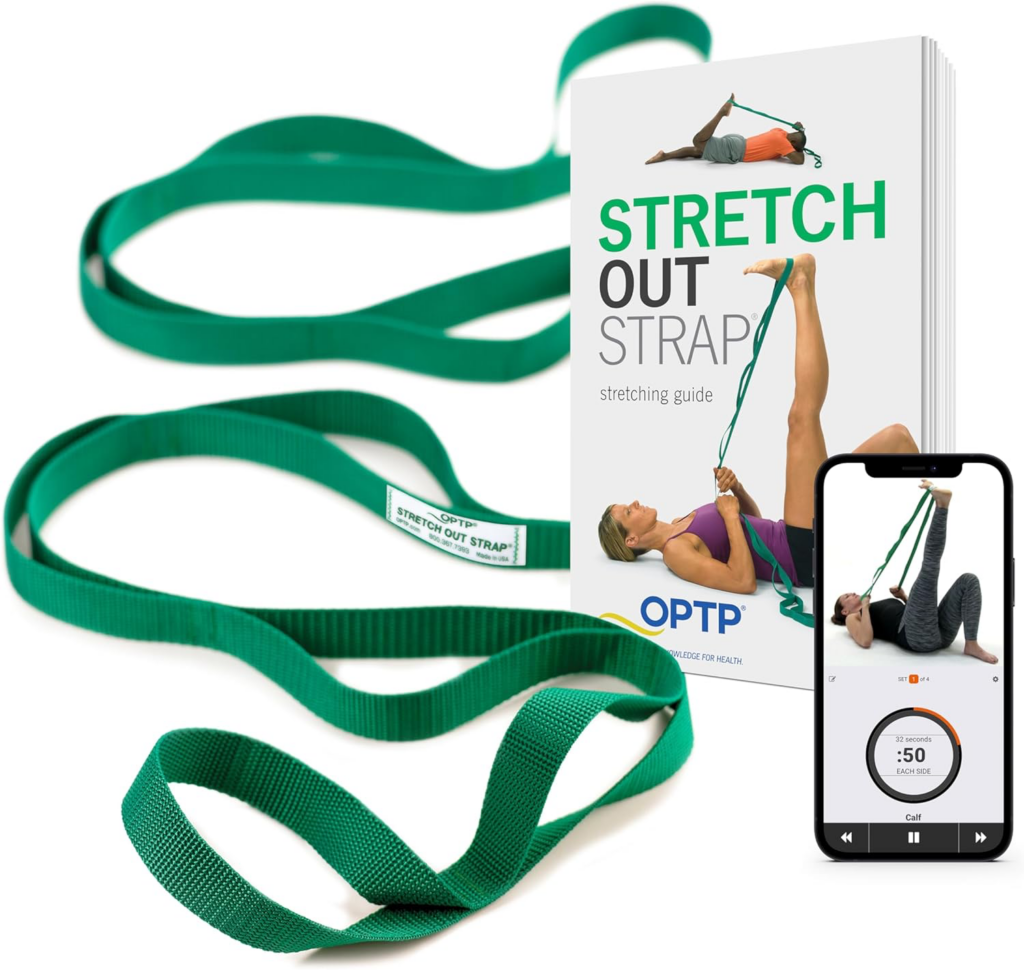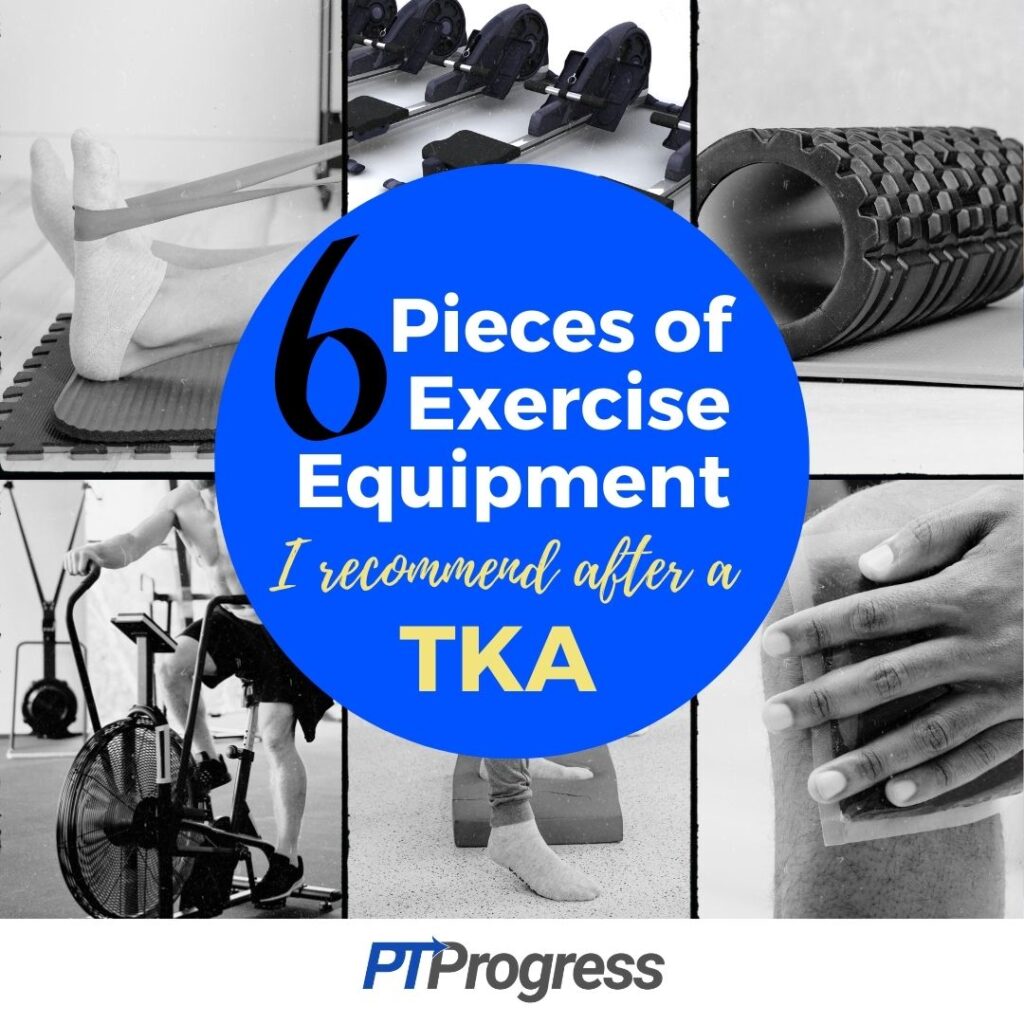
If you’re anticipating a total knee replacement surgery (TKA) this year, I’ve picked out 6 pieces of exercise equipment I recommend you have at home. Each one will help you recover from surgery, continue physical therapy, and reap the strong results you’re hoping for.
Total Knee Replacement Recovery
Recovering from a knee replacement can take months, from your first day in the hospital to the day you can walk on both feet with no pain. It may take 6-12 months before you can fully resume your favorite activities, such as hiking, sports, or gardening.
Twelve months may feel like a long road to recovery, but you’re not alone on it. Your surgeon has likely prescribed you several weeks of physical therapy to initially manage your pain, monitor your incision site, and rehabilitate your new knee.
Having your own set of exercise equipment for total knee replacement can help you continue your recovery process on your own. By giving yourself the right support at home from Day 1, you’ll set yourself up for success—no matter how long it takes.
Exercise Equipment for Total Knee Replacement Recovery
Here are 6 things I recommend you keep at home as you recover from your total knee replacement. You don’t necessarily have to buy everything on this list, or buy anything at all. If you know anyone who’s already gone through a TKA, they may be willing to lend you some items. You can also check secondhand shops and community groups such as Facebook for recovery equipment at no or low cost.
1. Ice Pack

The first thing you’ll want to do when you get home from a TKA is kill the pain. One of the best ways to do this non-pharmacologically is through ice therapy. An ice pack will deliver pain-numbing cold right to the areas you need it most. For longer-term, recurrent use, consider an ice machine.
Use it to: Reduce swelling and block pain, up to 20 minutes an hour, 3–4 times a day, for the first several weeks after your surgery. I recommend wearing the ice pack when performing ankle pumps, as I demonstrate in the photo below. Just be sure to include a cloth barrier between your skin and the ice pack to prevent tissue damage.
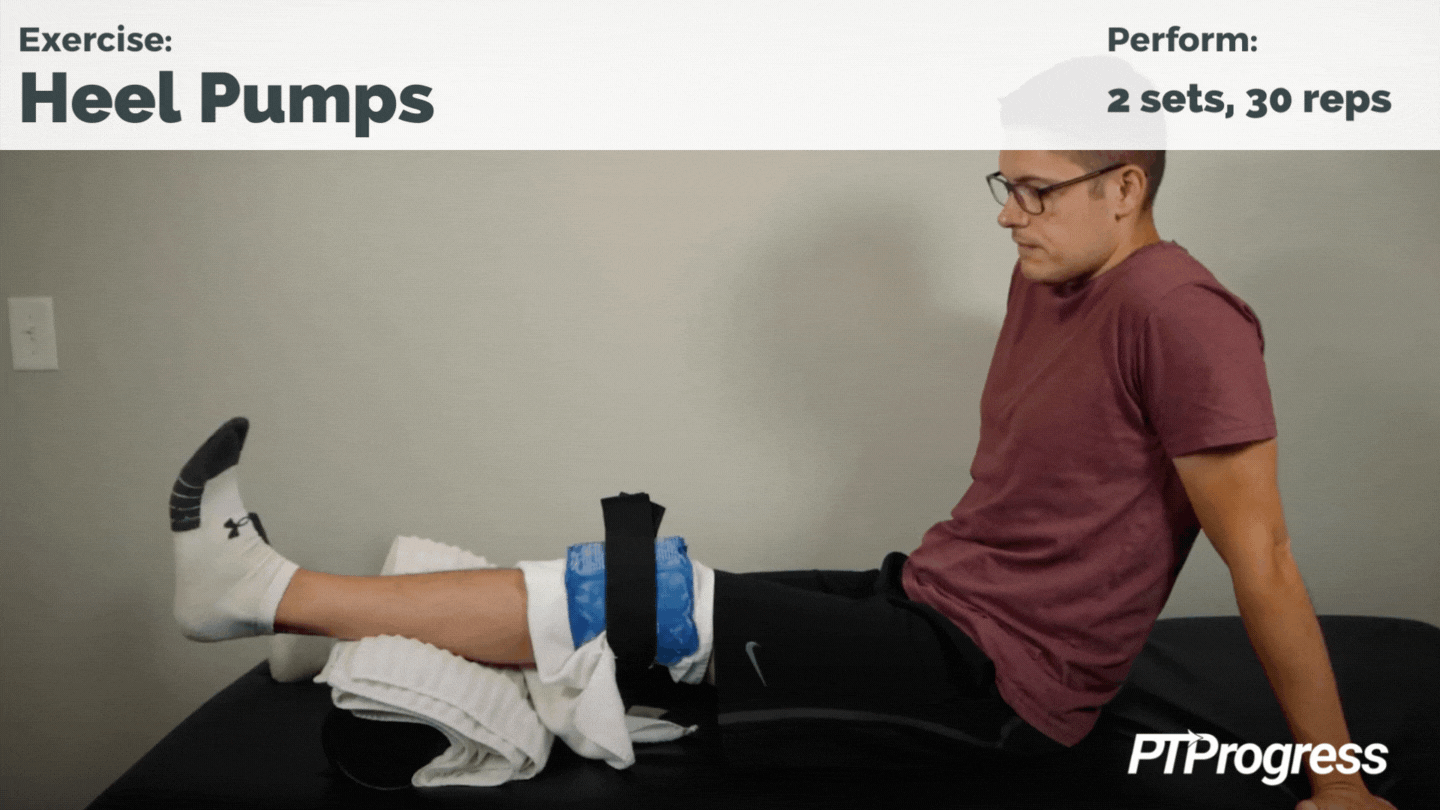
Benefits: Cold temperatures reduce pain and swelling by numbing pain receptors and constricting blood vessels. This helps your knee heal faster, while also staving off some of the pain that keeps you from doing physical therapy. To that effect, an ice machine might help you be more consistent with icing your knee, ensuring better outcomes for your pain and recovery.
What to look for: A simple reusable ice pack will stay flexible when frozen and mold to your knee for close application. This model from iReliev comes with velcro straps and can also be microwaved to provide heat therapy if needed. Buy a few so you always have a frozen one ready.
If you want to forgo the never-ending cycle of ice packs, instead purchase an ice machine. There are a few affordable options listed in this post. You’ll want a plug-in machine you can easily refill every 4–6 hours, including a timer feature to help you avoid frostbite. The Polar Vortex machine from Amazon is a great option under $200.
2. Foam Roller
You may already be familiar with a foam roller for other aspects of healthcare, such as massaging the tight muscles in your back or performing core workouts. After a knee replacement surgery, your trusty foam roller, with its smooth surface and solid support, can act as a bolster for your post-op knee.
Use it to: Keep your feet elevated when you’re resting, or prop it under your leg when doing PT exercises such as a quad set. To perform a quad set, place your foam roller under the ankle of your post-op leg. Now tighten your quad muscle (the muscle above your knee) as if you’re trying to touch the back of your knee to the bed. Hold for 5 seconds then relax the leg completely, repeating 10 times, 2–3 times daily.
Benefits: A quad set is a contraction exercise that can help restore strength in your quad muscle as you wait for your knee to fully heal. Performing these every day will help you fully extend your knee and stand without your knee buckling.
And in general, keeping your knee elevated while resting can help reduce swelling, especially if you elevate it whenever you’re applying ice.
What to look for: Foam rollers are about a dime a dozen—or whatever the equivalent in today’s economy—and you can find several iterations on Amazon for under $10. One thing to look out for is the length of the roller. Although a 3-feet-long foam roller comes in handy for on-the-floor exercises, it will probably be too bulky for your needs right now. A short 12-inch foam roller like this one is perfect for using as a bolster after a knee replacement.
3. Stretch Out Strap
After a knee replacement, your PT may recommend you buy a Stretch Out Strap (SOS), also called a yoga strap. We use them all the time in the clinic for various reasons. In your case, a looped strap can help you introduce flexion in your knee and assist movement early on. It certainly beats trying to rig up a belt or a towel behind your knee.
Use it to: Assist your knee into flexion, stretch it into extension, and otherwise help you perform PT at home. For example, to perform a strap-assisted heel slide, place your foot inside one of the loops towards the end of the strap and hold the other end of the strap in your hand on the same side of your body. Lie down on your bed, with your post-op knee extended comfortably and your other leg bent with that foot flat on the bed for support. From here, use the strap to assist your post-op knee into flexion, sliding your heel on the bed towards your bottom. You’ll then straighten your leg and extend the knee back to the starting position. Repeat 10 times, 3 times a day.
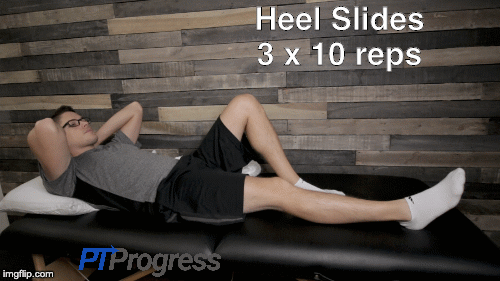
Benefits: A long looped strap like the SOS is like an extension of your hands, allowing you to guide your leg without having to bend over. When you’re at home away from your physical therapist, this strap can sub for some of the assistance they provide. The series of built-in loops on the SOS make it easy to secure your feet or hands at a comfortable distance from each other.
What to look for: The original Stretch Out Strap from OTPT is available for $16 on Amazon. But if you’re on a tight budget, you can also use a towel or sheet to serve a similar purpose.
4. Balance Pad
A balance pad is a soft, foam square that provides an unstable surface for you to stand on when performing physical therapy. You’ll probably encounter a balance pad at PT, but when using it at home, have a stable countertop or other support handy in case you lose your balance.
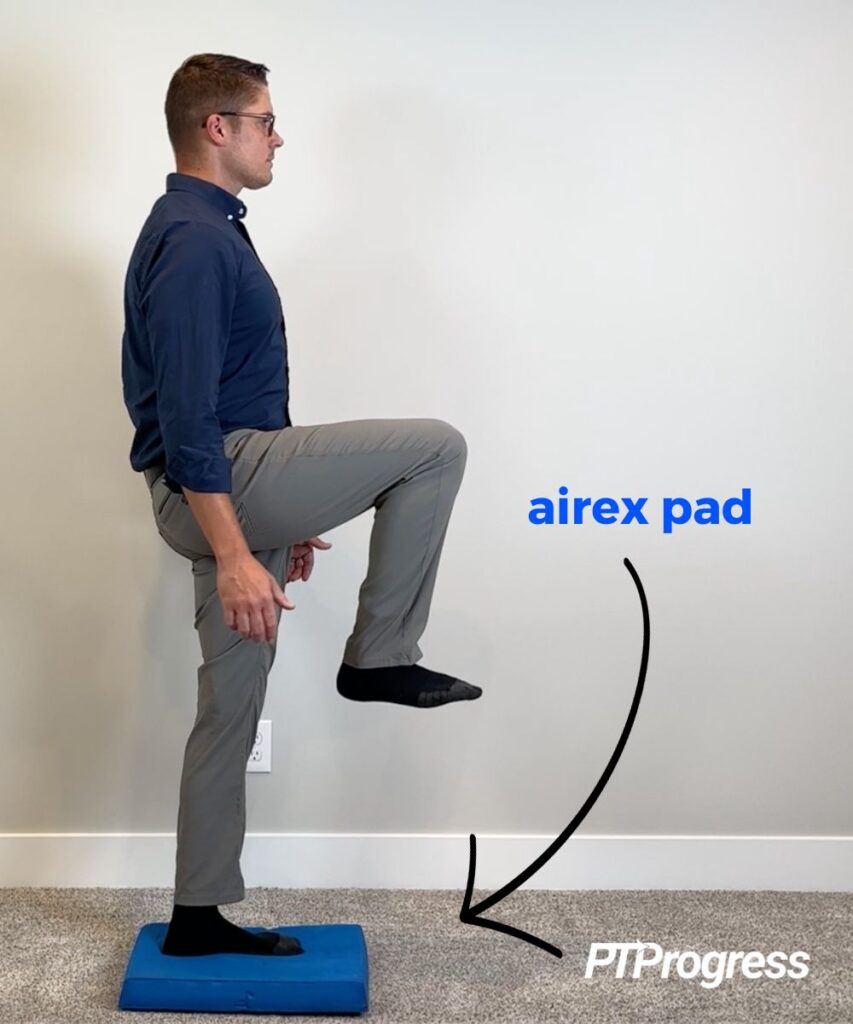
Use it to: Practice balance exercises, such as a single-leg stance. To perform a single-leg stance, stand with both feet on the balance pad, near a countertop or sturdy chair for support. Then shift your weight onto your post-op leg and lift your good leg from the balance pad so you are standing on one leg, holding for 10 seconds at a time. As you get stronger, you can hold the stance for longer, raise your leg higher, and perform other dynamic movements to challenge your balance.
Be sure to follow the home exercise program your PT gave you. But for more exercise ideas, check out this post.
Benefits: The soft foam surface of a balance pad can replicate the real-world challenges of unstable surfaces, giving your new knee a chance to practice maintaining balance. This element of instability can help you advance balance exercises like the single-leg stance that are typically performed on the ground.
What to look for: The Airex Balance Pad is the one I recommend to my patients after a total knee replacement. It features two pounds of high-quality closed-cell foam designed to withstand wear and tear. The standard pad measures 20” long by 16” wide.
For even more of a balance challenge down the road, consider a balance board, a flat board with a concave bottom that rocks back and forth when you step on it.
5. Schwinn Airdyne Bike
This is my favorite bike to use with patients in the clinic and the one I personally own! If you want to continue strengthening your legs at home just like you would at a PT clinic, this is the bike I recommend.
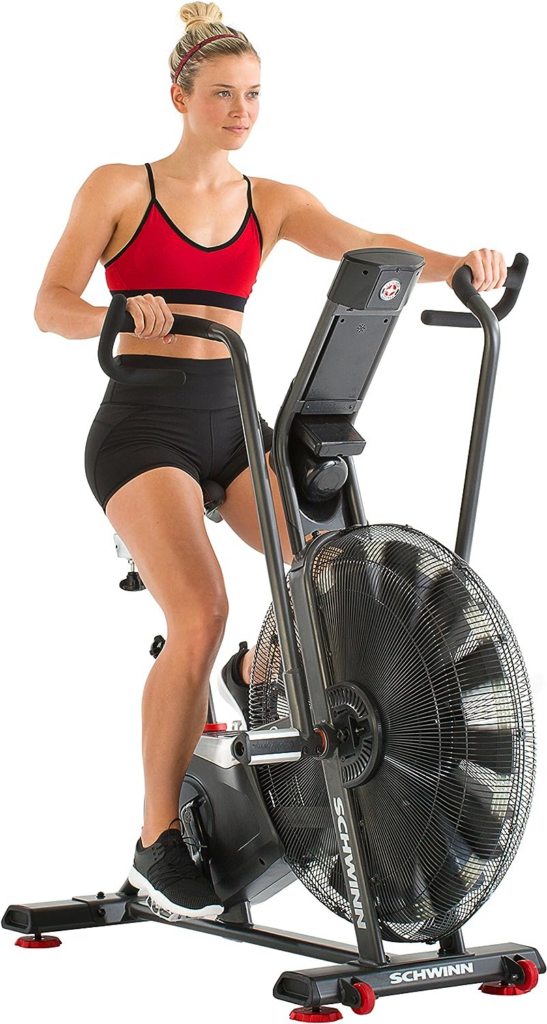
There are cheaper options from Schwinn and other companies, but the Airdyne remains my favorite if you can afford it. Check out this post to read my full review of this bike and compare it to other Schwinn models.
Use it to: Begin cardiovascular exercise after total replacement surgery at home. If you’ve been cleared to use an upright exercise bike, start by pedaling with no resistance for 5–10 minutes at a time. If your PT recommends it, you may be able to gradually increase your pedal time to 20–30 minutes. Before you start using the bike, you’ll need at least 100º flexion in your knee, so always check with your PT first!
Benefits: Fitness equipment like the Schwinn Airdyne can help you perform low-impact, non-weight-bearing cardiovascular exercise at home, no matter the weather or terrain outside. By toggling the resistance and controlling your speed, you can easily modify your workout to accommodate your post-operative knee. As you work towards a full recovery, cycling at home can help you establish new health habits that benefit your heart and lungs as well as your new knee.
What to look for: If you have trouble getting on and off the bike at the clinic, a recumbent or reclined bike may be better for you. Otherwise, an upright bike is the standard for most PT clinics. The Schwinn Airdyne features a weighted fan for air resistance, a wide and adjustable seat, and a display screen for tracking your miles, minutes, and RPM.
6. Rowing Machine
As your PT treatments come to a close, you may be looking for a safe way to further challenge your workouts at home. Rowing provides a host of benefits, including cardio and full-body work. If cleared by your PT, rowing is gentle enough to perform even after a total knee replacement.
Use it for: Full-body cardio workouts, assisted heel slides, and other exercises as prescribed by your PT. Aim for 20–30 minutes of cardiovascular exercises 5 times a week, if your PT okays it. Your legs will need a challenge like rowing to rebuild muscle, after weeks of rest.
But even if you don’t have full knee flexion yet, you can use the rower to support some of the exercises you’ve been doing in PT, such as the patellar glides pictured below. Check out this article for tips on using a rower after a total knee replacement.
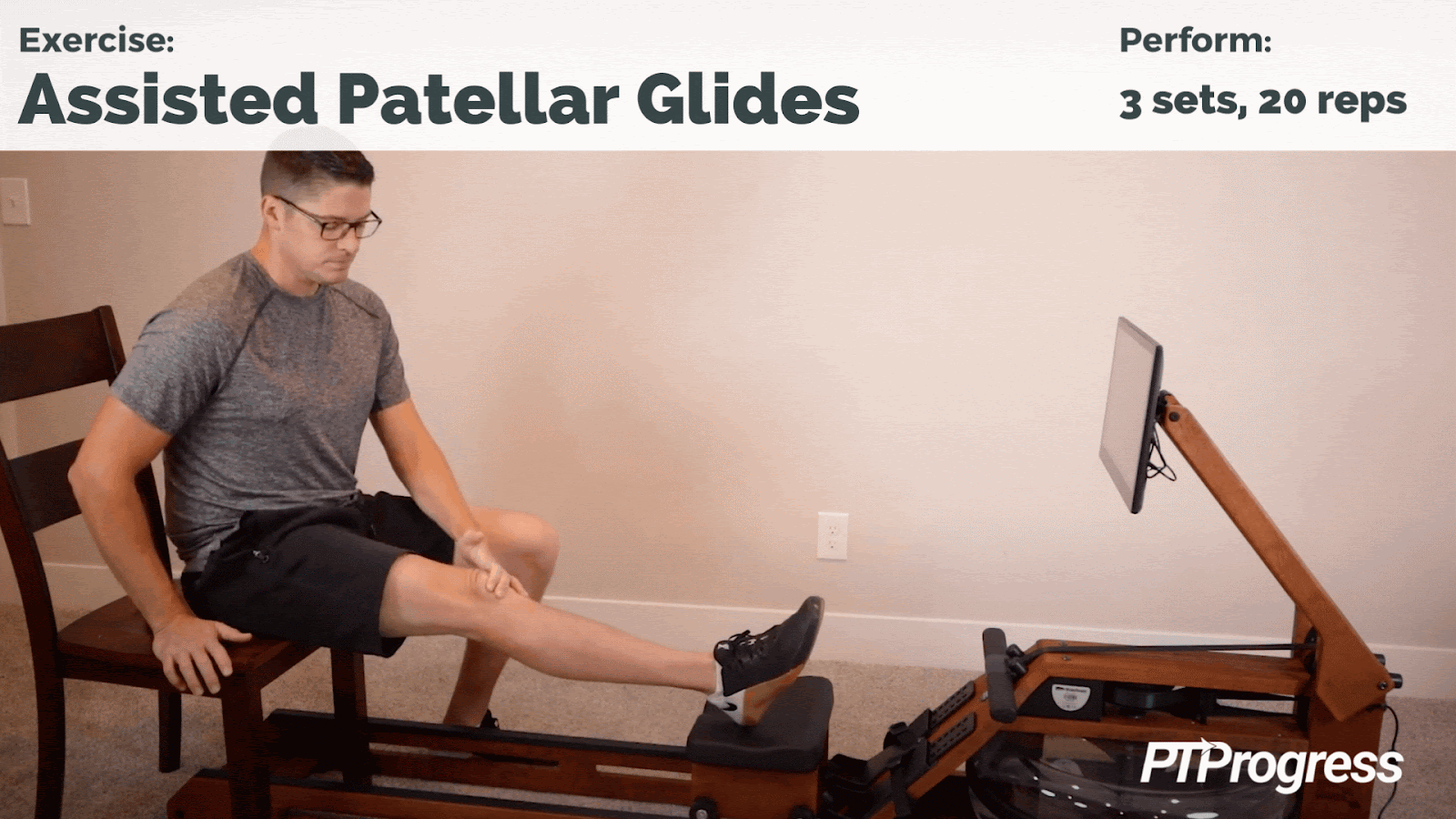
Benefits: Rowing is a great workout for the legs, but that’s not all it targets. It’s believed that rowing can recruit up to 86% of your muscles! That’s why we call it a “full-body” exercise, working your arms, legs, back, and core. And after a total knee replacement, you may find a rower easier to get on and off than an upright bike, gentler on your joints than a treadmill, and downright fun to use.
What to look for: Although there are a few different types of rowers available, I recommend a water rower like this one from Ergatta. Water rowers replicate the natural resistance of pulling a boat through water, making your workout quiet, smooth, and easy to modify. It’s not budget-friendly, but the Ergatta machine gets top marks for functionality, style, and connectivity. Read this post to learn more about the Ergatta and compare it to other types of rowers.
Final Thoughts on Exercise Equipment for Total Knee Replacement
Total knee replacement surgery is a widely performed procedure with a high success rate. There’s a good chance you’ll have a supremely positive outcome. Just be consistent with your physical therapy, even after your prescribed treatments end, and support your new knee with some of the above exercise equipment for total knee replacement. And don’t forget to check out the blog for more total knee replacement resources!

